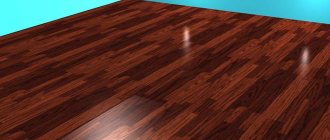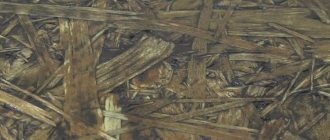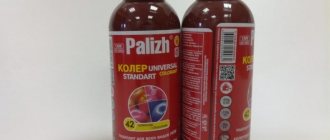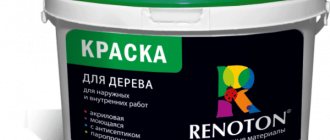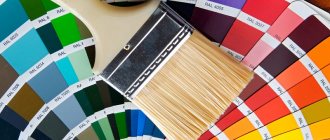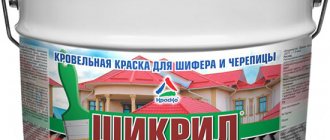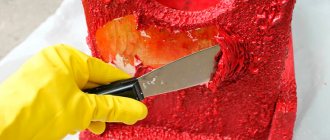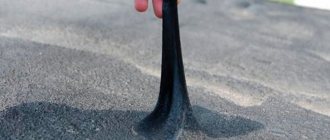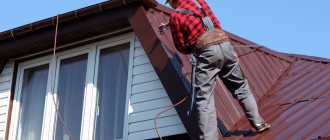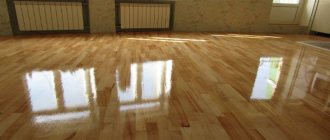Features of the material
Gypsum is a building material of natural origin. The mineral is extracted from the depths of the earth, burned, crushed to a powder state, and mixed with water until smooth. The use of gypsum mortar in construction is varied:
- wall covering;
- creation of stucco moldings, statues and other small artistic and architectural elements;
- casting bricks, decorative slabs;
- fastening elements at an intermediate stage of construction.
The standard color of the material is white or grayish-white. Plaster elements are used to decorate interior spaces, facades, and garden plots. With the help of plaster you can create a figure of any complexity and pretentiousness, in any style.
Expert opinion
Zakharova Irina Yurievna
Cleaning professional with 15 years of experience. Our best expert.
Ask a Question
During operation, it should be remembered that gypsum is destroyed by prolonged and abundant exposure to moisture.
The material is popular because it has many advantages:
- hardens quickly (therefore you cannot hesitate to complete the work);
- has a “breathing” porous structure;
- not exposed to direct flame;
- weighs little;
- easy to process, does not require complex installation measures;
- absorbs paint well and does not require complex painting procedures;
- environmentally friendly;
- is relatively inexpensive.
Painting decorative stone
Coating gypsum stone with varnish is an excellent opportunity to improve the performance and decorative properties of the material. You can choose paintwork materials according to individual preferences - color, gloss strength and other characteristics.
Coloring rules
To obtain optimal results, the following recommendations should be followed:
- All gypsum products and individual elements must be thoroughly dried before starting work. The glue must be dry, like previous coating layers (for example, paint or enamel).
- Before working with figurines, figurines, and other products, they must be kept at room temperature for at least 24 hours. Otherwise, the varnish may lose its performance properties faster.
- Rough parts must be sanded first. It is better to do this before gluing it to the walls, because later the process will cause difficulties.
- If you plan to use additional impregnation, it is important to carefully read the instructions for the specific material. Some impregnations are applied before varnishes, others - after them, and others are not combined with varnishing at all.
It must be remembered that shiny varnishes weaken the effect of naturalness, but give a feeling of festivity. If the room is decorated in styles that strive for naturalness, it is better to buy matte paints and varnishes.
Tools
The choice of tools will depend on the staining method. To apply varnish, you can use a roller, brush, sponge, or spray gun (airbrush). Small brushes are usually used for touching up hard-to-reach areas. If the product needs sanding, you will need a sandpaper or sanding machine, as well as a vacuum cleaner to remove dirt and dust. You also need to prepare:
- rags;
- degreasing solution;
- impregnation (if required).
Ordinary paint brushes made from natural materials and fluffy rollers are not suitable for varnishing gypsum stone. In this case, the consumption of varnish will be very large, and streaks will appear on the surface. In general, you need to work with a brush carefully: drips and stains cannot be avoided even by the most experienced master. But you can’t do it without a brush if you have to paint “torn” areas of the cladding.
Spraying has a big advantage over other methods of applying varnish. The airbrush will ensure uniform coverage of the base, the surface will become uniform. By changing the distance from the nozzle, you can create different effects when varnishing. Also, only with the help of an airbrush is it possible to make a smooth transition between darkened and lighter areas.
It is not necessary to use expensive devices for painting and varnishing. Even the cheapest airbrush - a spray gun - is suitable. It is only important to pay attention to the quality of the compressor - the final coloring result depends on it.
Preparing the stone
The preparatory activities are simple. Contaminants and dust must be removed from plaster parts, but the material must not be moistened. If necessary, it is sanded, and then the dust is wiped off again. Then the selected type of impregnation is applied (for example, to increase moisture resistance or with antiseptic properties). After soaking, gypsum tiles should be allowed to dry thoroughly.
Suitable coloring compounds
Gypsum has remarkable adhesive properties, that is, the products actively absorb moisture and liquid substances, including paints and varnishes.
What dyes, impregnating and protective compounds can be applied to plaster:
- Acrylic, water-based, water-dispersion paints. Acrylic is most in demand for processing. It gives the surface a decorative appearance, protects it from negative external factors, is resistant to ultraviolet radiation, vapor permeable (due to which it creates optimal microclimatic conditions in the room), and elastic (the likelihood of cracking is low).
- Iron and copper sulfate are impregnating compounds that increase the strength of gypsum. The second purpose is to give the surface a pleasant shade: light blue when adding a copper-containing substance, light yellow when adding an iron-containing substance. For coloring, vitriol powder is dissolved in water. Plaster products are placed in the solution so that they do not touch.
- Stain for wooden surfaces allows you to create a beautiful shade. But you should work with it carefully; first, it is advisable to apply a little of the composition to a small part of the plaster product. Modern manufacturers often add substances to plaster that react negatively with stain.
- Transparent varnish is a means of enhancing the brightness and vibrancy of a color coating. The varnish protects the painted surface from negative external factors. It can also be used to process unpainted plaster to give it a glossy finish. Since paint is quickly absorbed by the gypsum surface, products can be varnished almost immediately after painting.
- Gold and silver dyes. Sold in art stores.
- Dyes for coloring gypsum mortar. Usually they are added to the composition before casting finishing bricks.
- Minium is an orange-red or red-brown paint of natural origin, obtained by the oxidation of lead or iron. Has high protective properties.
- Potal is thin foil. Based on an alloy that imitates gold leaf, silver or aged bronze.
See also
Lessons on creating simple drawings with paints for children and what you can draw
How can the material be processed?
Since gypsum tends to absorb moisture over time, it should be painted immediately after production, otherwise the paint will not adhere well to the product. The paint must be applied to a completely dry, smooth surface without chips, cracks or other defects.
If you have to work with an old plaster surface, then before painting it must be treated:
- Remove dust and dirt stains. Do not wet the surface too much.
- Remove any remaining paint from the previous painting. Sanding plaster is not easy, the work is labor-intensive, especially when the stucco is under the ceiling.
- Treat the cleaned surface with a primer. You can buy a ready-made composition at a hardware store, or you can dilute polyvinyl acetate glue in water in a ratio of 1:4.
- If necessary, impregnate with a composition that makes the material less susceptible to moisture and other negative factors. Certain impregnations may be incompatible with dyes, so you must read the instructions before using the compositions.
- Leave the plaster until dry.
Rules for caring for garden plaster figures
Garden figures and plaster figurines are an affordable option for decorating your site. With proper care they will last for a long time. If the product is painted, then you just need to remove dust and dirt from it with a damp cloth or vacuum cleaner. Treatment with antifungal drugs is recommended. The paint will protect against fading and precipitation.
If the figure is not colored, then:
- First you need to cleanse the pores of dirt. For this purpose, special preparations are suitable that you can buy or make yourself. For example, a mixture of starch: dissolve 70 g of powder in 100 ml of cold water. Then pour all this into hot water (930 ml). The mixture cooled to 45°C is coated with a previously cleaned decorative element and covered with cotton wool for 7-10 hours.
- After cleaning, the item should be protected from moisture. To do this, use a special varnish or a mixture of wax with any solvent in a ratio of 10-15%. Moisture-resistant coatings for gypsum are also produced.
You can fix chips or cracks on the surface of the product yourself by taking plaster and adding a 15% PVAD solution. Prime the area around the damage with PVA glue and then apply plaster.
If there is a lot of damage, then the figure must be sent for restoration.
Gypsum is a mineral of plant origin. This is a popular finishing material: gypsum tiles are used in interiors, gypsum mixtures are used in construction, medicine, and art. But this material requires mandatory protection from destruction, since its surface is fragile. For these purposes, a special plaster varnish is sold, which helps to create a beautiful finish similar to natural stone.
Rules for choosing the right paint
The choice of paint is determined by the purpose and object of application:
- stucco molding, statues, bas-reliefs are painted with acrylic, water-based or water-dispersion composition;
- to reduce susceptibility to moisture, use an acrylic composition with silicone;
- so that the gypsum product retains its color forever, and white areas do not appear in places of cracks and chips, the color is added at the stage of mixing the gypsum solution;
- to create the effect of antiquity, plaster is treated with drying oil (the effect will appear gradually);
- to imitate a terracotta coating, plaster is treated with rosin and shellac varnish diluted with alcohol (the effect will also not appear immediately);
- to create the effect of a metal surface, foil is glued and varnished on top;
- To imitate a wax surface, plaster is coated with wax diluted with acetone, with the addition of yellow oil paint, and the dried surface is polished with a soft cloth.
Regardless of the type of paint, you need to make sure that it is suitable for covering the plaster. The main thing to pay attention to is consistency. The chosen paint should not be too liquid. Otherwise, unsightly smudges will appear on the plaster product. Paint in which clots are noticeable when stirred should also not be used: either the expiration date has expired, or the product was stored in improper conditions.
See also
Do-it-yourself MDF painting technology and types of compositions, how to choose
If the pigment is added to the gypsum solution, you will have to tinker with stirring. The solution is quite dense, achieving uniformity is problematic. When adding paint, you need to take into account that the pigmented solution after drying becomes lighter than in the liquid state. Therefore, to obtain the desired shade, you need to pour in a little more paint than seems visually optimal.
Simple basic coloring
Conventional painting is done with acrylic, water-based or lime dyes. Select the desired dye that matches the primer and varnish used. When drying on plaster, paints may lose some brightness. A quick-drying, odorless, water-soluble varnish allows you to preserve the richness of the tone and protect the stucco molding from mechanical damage.
It is more convenient to paint the main working surface with an airbrush or spray gun. The devices apply primer and paint evenly, saving paint consumption. Deep relief depressions are painted over with a brush.
Sequence of work:
- Absolutely dry and clean stucco is primed. The primer composition reduces the absorption of gypsum, thereby allowing economical use of the coloring matter. At the same time, it improves the quality of adhesion of all applied layers. The primer is tinted, which also reduces the amount of color used and enhances its richness of color rendering.
- After the primer has completely dried, the first coat of paint is applied. The untinted base is sequentially painted 2-3 times.
- After all operations are completed, the product is varnished.
The latest generations of acrylic paints allow you to obtain coatings with various effects:
- "Lotus". The paints contain wax and provide a coating that is impervious to contamination.
- "Glow." The coloring composition contains quartz or marble dust, thanks to which the treated surface gives off a glow.
- Multi-colored and shiny inclusions. Color with fiber or chips.
How to paint correctly
For convenient coloring of plaster use:
- spray gun (if there is a lot of work);
- airbrush (for linear coloring);
- brushes of different sizes (for drawing details);
- sponges (for painting protruding elements and creating a “stone” effect);
- sandpaper (to create an “old” effect).
The purchased gypsum stone must be left for a couple of days in a shaded place to dry. You need to paint in a well-ventilated area, and leave the painted plaster parts there until they dry. To ensure uniform coloring, each element must be processed individually.
Acrylic should be applied to plaster in 3 layers. If you want to create the effect of color heterogeneity, first cover the surface with a dark shade of paint, lightly sand the relief areas, then apply a light paint.
After drying, the painted gypsum surface fades, so it is varnished. If you don't want to give the product a glossy look, use matte varnish. It will intensify the color, but without shine. Any varnish is applied to plaster in 2 layers.
To imitate marble, glaze is used - paint of different shades is applied in layers. To obtain the “old” effect, heat the drying oil, apply it tightly and evenly with a flat paint brush, and make 2 layers. After a short time, the coating will look like aged marble.
Creating relief
You can highlight the attractive aspects of the stucco relief using two or three bright shades:
- First, apply the lightest color, painting the entire decor, trying to avoid unpainting.
- The deep areas of the relief are painted with a dark shade, softening the boundaries of both colors with a brush with hard hair without paint, making a smooth transition from light to dark color. Unnecessary sprays are immediately removed with a dry cloth or brush.
- The background or the deepest recesses are treated with the darkest paint. Using a hard brush, soft transitions of the palette are created.
How to paint plaster bronze
Imitation metal is a popular design option for plaster. To complete the work, you need oil paints of the desired color, acetone solvent, a brush, and sandpaper. At the first stage, paint with light paint in 3 layers, and apply thinner paint on convex areas of the relief, and thicker paint in recesses. The dried paint is treated with sandpaper and wiped with a piece of cloth moistened with a solvent.
See also
How to paint polymer clay, top 5 compositions and application rules
At the second stage, bronze paint is applied tightly. When it dries, apply a third layer of bronze, thinned with a solvent, containing wax for a matte effect. After drying, the painted surface is lightly sanded on protruding areas, then a mixture of talc and chromium oxide is rubbed in using a soft cloth.
What varnish to use
Varnish improves the appearance of the product and increases its service life. Three types of varnish are suitable for processing gypsum.
Shellac
An alcohol solution of shellac, a natural resin, is often used in finishing work. Creates a thin and neat protective film. To make the coating more decorative, shellac composition with the addition of dyes is used.
Acrylic
An ideal option if you need to protect gypsum from moisture and other negative factors. Acrylic coating not only protects well, but also looks decorative; it can be glossy or matte. The first option makes the surface shiny, the second is suitable for covering wall tiles and gypsum bricks, when the imitation stonework cannot be spoiled.
Oil
This varnish is based on natural and synthetic resins, which give the structure an oily appearance. A thin film forms on the gypsum surface, which after drying protects it from negative factors and mechanical influences.
